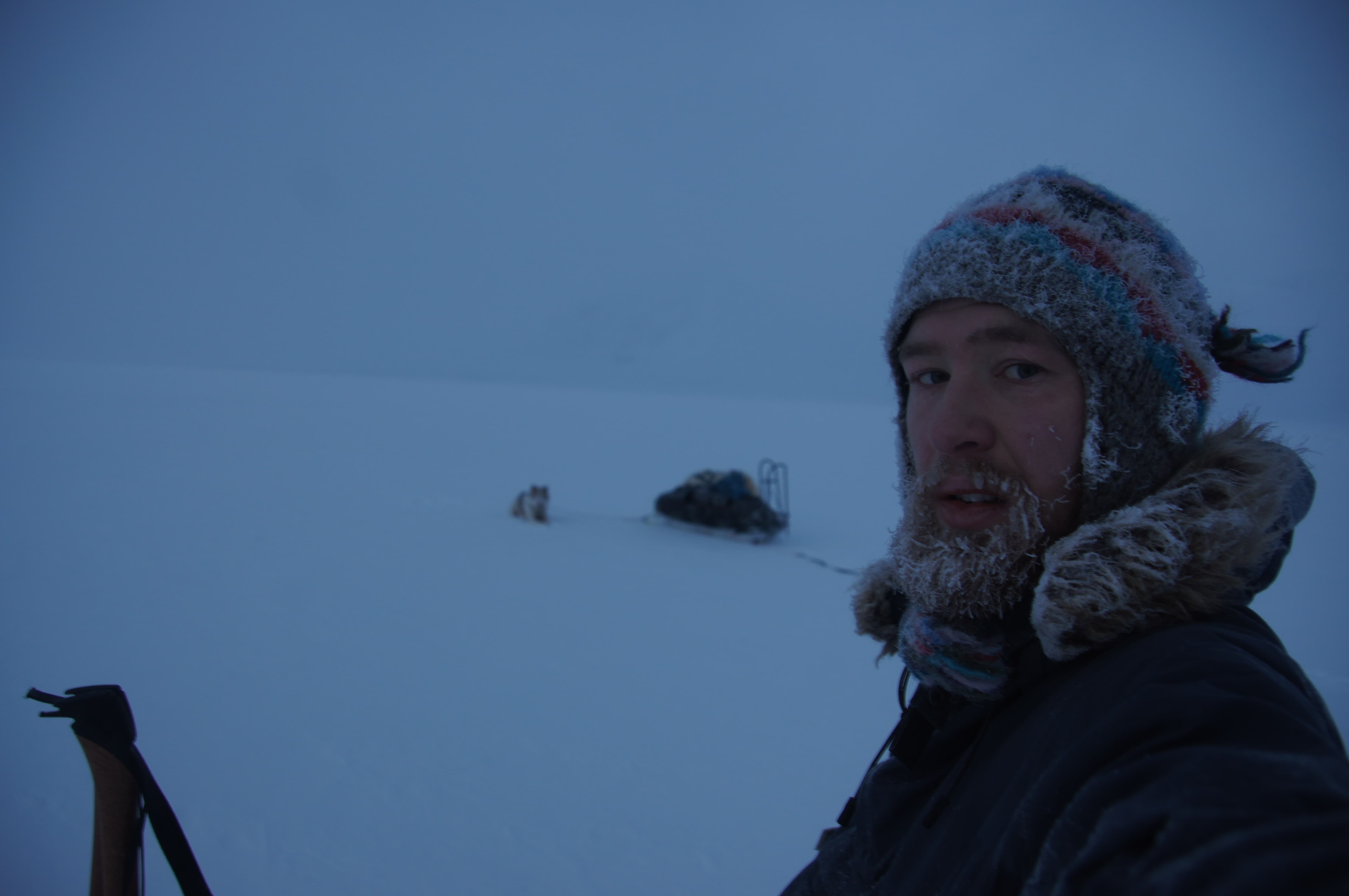
In possibly the world’s most extreme pub crawl, Kjell-Harald Myrseth and a friend set off on a 500km trek using skis, sleds and dogs to Alta, Norway. Inside the Arctic Circle in midwinter, they faced 21 hours a day of darkness and well-below-freezing cold during the month-long journey.
Although most people would avoid this kind of adventure, Kjell embraces these activities. He has always lived locally, has completed ten similar trips and had just finished his studies in Arctic adventure tourism.
It didn’t all go to plan though. Kjell’s friend had to drop out after the halfway point when he suffered frostbite in his toes. Then, when Kjell was just a day or two away from his destination, a hurricane strength storm blew in.
Kjell was unable to stand up and a tent would be ineffective but he knew the drill and crawled on the ground to build a snow cave for protection.
But this time the winds were reaching up to 140 km per hour and his cave collapsed after an hour. Although he could not even see his hands in the blizzard, Kjell built another cave. This too could only withstand the conditions for a short time.
Kjell had never heard of snow caves crumpling in this way. He realised his chances of survival were shrinking by the minute and he pressed the SOS button on his SPOT for the very first time despite taking the device on trips for many years.
Over the next two days Kjell built three more snow caves until there wasn’t enough nearby snow left to build any more – the wind had whipped it all off the ground.
There was nothing left to do but wait and hope.
Kjell lay in his sleeping bag next to his sled with his unhappy Greenland dogs. Wind had pushed snow between the layers of his clothes and while he had been working feverishly it had melted. Kjell was now not only cold but also wet as he endured wind chill temperatures down to -80 degrees C.
He knew that the chances of anyone reaching him were slim but he had to remain positive and keep himself awake and moving occasionally to reduce the risk of hyperthermia. He hadn’t slept properly for 60 hours and had been unable to eat or drink.
“I am a believer in the power of positive thinking. As I lay there, I thought about future trips and came up with a new business idea, offering dog sledding, hunting and fishing trips through Trapper’s Farm,” Kjell says. “I also thought about fairy tales,” he added.
Meanwhile, since Kjell had pressed the SOS button, search and rescue teams had been trying everything to reach him. Helicopters couldn’t fly in the extreme conditions and snowmobiles were tipping over in the wind. Using an army vehicle, the team managed to get half way to Kjell but had to stop when they reached a frozen lake that might not support their weight.
The team tried many times to reach Kjell by snowmobile, using GPS as their guide. Finally when the wind subsided slightly the team got to the location where Kjell had pressed his SPOT SOS button. Although they were less than five metres from Kjell, it took another half an hour to find him in the poor visibility.
“Thanks to SPOT and the SAR team’s perseverance, I was alive. I was transported to hospital and made a complete recovery,” said Kjell. “SPOT truly is an essential device when you are in the wilderness.”